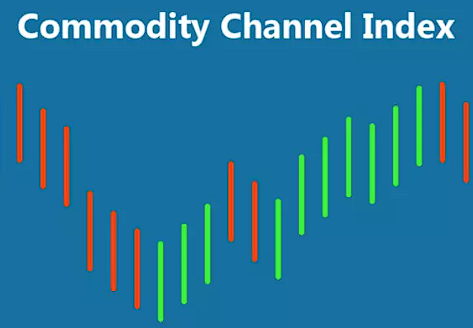Understanding the Commodity Channel Index (CCI)
There is no holy grail to fundamentally technically investing and trading the financial markets. There are hundreds of technical analysis indicators that traders use in range bound and trending markets. No one or combination of indicators can provide perfect technical analysis decisions. No need for it to be complicated, and easier to keep it simple. The CCI is one simple indicator you can use in all types of market conditions that can show strength, support, weakness, resistance, and divergences for potential reversals.
The Commodity Channel Index (CCI), devised by technical analyst Donald Lambert in 1980, initially featured in Commodities magazine but is now employed across various markets, not just commodities. This versatile indicator, once designed for long-term trend identification, has since found utility in all markets and timeframes. Traders often utilize CCI on longer-term charts to discern dominant trends and on shorter-term charts to pinpoint pullbacks and generate trade signals.
Strategies and indicators are not without pitfalls. Fine-tuning strategy criteria and adjusting the indicator period may enhance performance. Employing a stop-loss strategy can mitigate risks, and assessing CCI profitability in your specific market and timeframe is a prudent first step before trading.
Identifying Emerging Trends with CCI
The CCI’s adaptability makes it a potent tool for spotting reversals and market divergences. CCI oscillates between +100 and -100, with values above +100 suggesting overbought conditions and potential downward reversals. Conversely, values below -100 signal oversold conditions and potential upward reversals.
Zero line crossovers also help identify emerging trends: crossing above signifies a bullish signal, while crossing below indicates bearish sentiment. Divergence analysis can further unearth emerging trends, where new price highs without CCI confirmation indicate bearish divergence, and new price lows without CCI lows suggest bullish divergence. Drawing trendlines on the CCI chart can also offer early trend change signals.
Employing CCI on multiple timeframes bolsters signals, adding confidence to trades. Integrating CCI signals with candlestick formations and other price action patterns enhances entry and exit accuracy.
Spotting Overbought or Oversold Conditions with CCI
CCI effectively pinpoints overbought or oversold conditions in trading instruments. Overbought conditions occur when CCI surpasses +100 or even higher thresholds like +200 or +300, signaling potential price pullbacks. Conversely, oversold conditions occur when CCI dips below -100 or lower levels, such as -200 or -300, indicating potential price bounces.
Divergence analysis also helps: overbought divergence, where price sets new highs but CCI fails to follow, suggests a reversal. Oversold divergence, where price reaches new lows but CCI does not, indicates a potential reversal.
Considerations include duration, confirmation, and market context. Long-lasting overbought or oversold conditions hold significance. Seeking confirmation from other indicators or chart patterns is wise, as the CCI alone may not suffice. The CCI’s effectiveness varies with market conditions, being more reliable in trending markets than in sideways or rangebound ones.
Using CCI for Bullish and Bearish Divergence
CCI aids in spotting bullish and bearish divergences. For bullish divergence, observe price making lower lows while CCI makes higher lows. Confirmation occurs when CCI turns upward and crosses above the zero line or a specific threshold, often -100. Bearish divergence involves price making higher highs and CCI making lower highs, with confirmation as CCI turns downward and crosses below the zero line or a designated threshold, typically +100.
Divergence signals, while powerful, should not stand alone. Broader market context and validation from other indicators or methods bolster their reliability.
Advantages of CCI in Trading Decisions
Using CCI offers several advantages:
Overbought and Oversold Identification: CCI gauges current price levels relative to averages, identifying overbought (+100) and oversold (-100) conditions.
Trend Identification: CCI detects trends by crossing the zero line, offering buy or sell confirmation.
Divergence Detection: CCI identifies divergences between indicators and price action, signaling potential reversals.
Versatility: CCI adapts to various timeframes, from day trading to longer periods, enhancing flexibility.
Multiple Strategies: Combined with other indicators and price action, CCI supports robust trading strategies.
Formula-Based: CCI’s straightforward calculation suits automated trading systems.
Disadvantages of CCI in Trading Decisions
CCI has drawbacks:
False Signals: CCI generates false signals, especially during sideways movement.
Lagging Indicator: It confirms price moves after they occur, potentially causing delayed entry or exit.
Interpretation Complexity: CCI’s formula involves multiple variables, posing challenges for novice traders.
Sensitivity to Market Noise: Short-term fluctuations affect CCI, leading to frequent value changes that obscure trends.
Limited Information: CCI highlights overbought/oversold conditions but doesn’t specify trend duration or reversal points.
CCI as a Basic Momentum Strategy
CCI can serve as a momentum-based strategy. Buy on CCI crossing above zero and sell when it crosses below, adopting a straightforward long / short approach.
Using CCI Across Multiple Timeframes
Employing CCI across multiple timeframes enhances understanding and increases trade probability. Alignment with the broader market trend improves success rates. Multiple timeframes help filter false signals, reducing unprofitable trades. Combine CCI with other indicators or methods for more reliable signals.
Similar Technical Indicators to CCI
Similar indicators include Stochastic CCI, Relative Strength Index (RSI), Moving Average Convergence Divergence (MACD), Rate of Change (ROC), Momentum Oscillator, and Williams Percentage R.
Choosing the Best Timeframe for CCI
CCI’s timeframe depends on your strategy and objectives. Start with weekly daily timeframes to see the primary trend, then shorter timeframes for the counter trend, and if you are day-trading. Backtesting across various timeframes is crucial to align CCI with your trading goals.
Assets Suitable for CCI Trading
While designed for commodities, CCI now suits various asset classes like stocks, ETFs, futures, and forex.
Enhancing CCI Reliability
Incorporate volume indicators to confirm CCI signals and backtest your strategy on historical data. Blend fundamental tools and employ risk management techniques for a more reliable CCI-based strategy.
In Conclusion
CCI is a versatile tool for traders, aiding in trend identification, overbought / oversold conditions, and divergence detection. It can be applied across timeframes and asset classes but requires caution due to potential false signals. Combining CCI with other indicators, fundamental analysis, and risk management can improve decision-making, making it a potent tool in your trading arsenal.


